VdPT1 Encoding a Neutral Trehalase of Verticillium dahliae Is Required for Growth and Virulence of the Pathogen
- PMID: 38203466
- PMCID: PMC10778863
- DOI: 10.3390/ijms25010294
VdPT1 Encoding a Neutral Trehalase of Verticillium dahliae Is Required for Growth and Virulence of the Pathogen
Abstract
Verticillum dahliae is a soil-borne phytopathogenic fungus causing destructive Verticillium wilt disease. We previously found a trehalase-encoding gene (VdPT1) in V. dahliae being significantly up-regulated after sensing root exudates from a susceptible cotton variety. In this study, we characterized the function of VdPT1 in the growth and virulence of V. dahliae using its deletion-mutant strains. The VdPT1 deletion mutants (ΔVdPT1) displayed slow colony expansion and mycelial growth, reduced conidial production and germination rate, and decreased mycelial penetration ability and virulence on cotton, but exhibited enhanced stress resistance, suggesting that VdPT1 is involved in the growth, pathogenesis, and stress resistance of V. dahliae. Host-induced silencing of VdPT1 in cotton reduced fungal biomass and enhanced cotton resistance against V. dahliae. Comparative transcriptome analysis between wild-type and mutant identified 1480 up-regulated and 1650 down-regulated genes in the ΔVdPT1 strain. Several down-regulated genes encode plant cell wall-degrading enzymes required for full virulence of V. dahliae to cotton, and down-regulated genes related to carbon metabolism, DNA replication, and amino acid biosynthesis seemed to be responsible for the decreased growth of the ΔVdPT1 strain. In contrast, up-regulation of several genes related to glycerophospholipid metabolism in the ΔVdPT1 strain enhanced the stress resistance of the mutated strain.
Keywords: RNA-seq; RNA-sequencing; Verticillium dahliae; cotton; trehalase.
Conflict of interest statement
The authors declare no conflict of interest.
Figures
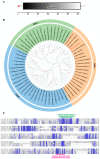



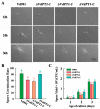
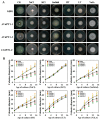

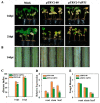

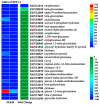
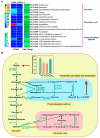


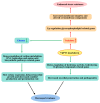
Similar articles
-
VdPAT1 encoding a pantothenate transporter protein is required for fungal growth, mycelial penetration and pathogenicity of Verticillium dahliae.Front Microbiol. 2025 Jan 17;15:1508765. doi: 10.3389/fmicb.2024.1508765. eCollection 2024. Front Microbiol. 2025. PMID: 39895932 Free PMC article.
-
The bZip Transcription Factor VdMRTF1 is a Negative Regulator of Melanin Biosynthesis and Virulence in Verticillium dahliae.Microbiol Spectr. 2022 Apr 27;10(2):e0258121. doi: 10.1128/spectrum.02581-21. Epub 2022 Apr 11. Microbiol Spectr. 2022. PMID: 35404080 Free PMC article.
-
Characterization of the Endophytic Bacillus subtilis KRS015 Strain for Its Biocontrol Efficacy Against Verticillium dahliae.Phytopathology. 2024 Jan;114(1):61-72. doi: 10.1094/PHYTO-04-23-0142-R. Epub 2024 Feb 2. Phytopathology. 2024. PMID: 37530500
-
Identification and Functional Analysis of a Novel Hydrophobic Protein VdHP1 from Verticillium dahliae.Microbiol Spectr. 2022 Apr 27;10(2):e0247821. doi: 10.1128/spectrum.02478-21. Epub 2022 Apr 4. Microbiol Spectr. 2022. PMID: 35377232 Free PMC article.
-
Insights to Gossypium defense response against Verticillium dahliae: the Cotton Cancer.Funct Integr Genomics. 2023 May 1;23(2):142. doi: 10.1007/s10142-023-01065-5. Funct Integr Genomics. 2023. PMID: 37121989 Review.
Cited by
-
VdPAT1 encoding a pantothenate transporter protein is required for fungal growth, mycelial penetration and pathogenicity of Verticillium dahliae.Front Microbiol. 2025 Jan 17;15:1508765. doi: 10.3389/fmicb.2024.1508765. eCollection 2024. Front Microbiol. 2025. PMID: 39895932 Free PMC article.
-
Deleting an xylosidase-encoding gene VdxyL3 increases growth and pathogenicity of Verticillium dahlia.Front Microbiol. 2024 Jul 22;15:1428780. doi: 10.3389/fmicb.2024.1428780. eCollection 2024. Front Microbiol. 2024. PMID: 39104581 Free PMC article.
-
Zinc Metalloprotease SlMEP1: An Essential Factor Required for Fungal Virulence in Stemphylium lycopersici.J Fungi (Basel). 2025 Apr 22;11(5):330. doi: 10.3390/jof11050330. J Fungi (Basel). 2025. PMID: 40422664 Free PMC article.
-
Transcriptome-Based Gene Modules and Soluble Sugar Content Analyses Reveal the Defense Response of Cotton Leaves to Verticillium dahliae.Int J Mol Sci. 2024 Dec 12;25(24):13326. doi: 10.3390/ijms252413326. Int J Mol Sci. 2024. PMID: 39769091 Free PMC article.
-
Fungal and algal lichen symbionts show different transcriptional expression patterns in two climate zones.Proc Biol Sci. 2025 Jul;292(2050):20242962. doi: 10.1098/rspb.2024.2962. Epub 2025 Jul 2. Proc Biol Sci. 2025. PMID: 40592450 Free PMC article.
References
-
- Pegg G.F. Effect of host substrate on germination and growth of verticillium albo-atrum and V. dahliae conidia and mycelia. Trans. Br. Mycol. Soc. 1978;71:483–489. doi: 10.1016/S0007-1536(78)80077-1. - DOI
-
- Gui Y.J., Chen J.Y., Zhang D.D., Li N.Y., Li T.G., Zhang W.Q., Wang X.Y., Short D.P.G., Li L., Guo W., et al. Verticillium dahliae manipulates plant immunity by glycoside hydrolase 12 protens in conjunction with carbohydrate-binding module 1. Environ. Microbiol. 2017;19:1914–1932. doi: 10.1111/1462-2920.13695. - DOI - PubMed
MeSH terms
Substances
Supplementary concepts
Grants and funding
LinkOut - more resources
Full Text Sources

